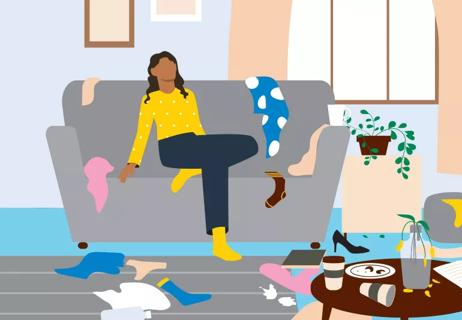A booster dose, healthy snack and some downtime may help ward off a medication rebound

Medications can be helpful for many kids with attention-deficit/hyperactivity disorder (ADHD). But when they wear off each day, some kids may experience an ADHD “crash,” which can be no fun for them — or you.
Advertisement
Cleveland Clinic is a non-profit academic medical center. Advertising on our site helps support our mission. We do not endorse non-Cleveland Clinic products or services. Policy
Pediatric specialist in developmental behavior Carrie Cuffman, MD, explains what an ADHD crash looks like and how to avoid it.
Stimulants like Ritalin® and Adderall® (and their generic counterparts) are the most common types of ADHD medication. These medicines can last four to 16 hours, depending on the type and how quickly your child’s body processes them.
While some kids feel OK when their medication wears off, others struggle with a “crash,” aka a medication rebound. If your child takes their med in the morning, you’ll likely see this crash sometime in the afternoon.
“An ADHD medication rebound is when your child’s ADHD meds wear off too quickly,” explains Dr. Cuffman. “This rapid drop in medication levels can cause ADHD symptoms to be more intense than usual.”
If your child’s having a crash, they might:
You can usually spot an ADHD medication crash by its timing. “Keep track of when your child takes their medication each day,” suggests Dr. Cuffman. “A crash usually occurs 30 to 60 minutes before the medication should be out of their system.”
Advertisement
An ADHD crash can be hard on kids because they often don’t have the same emotional control as adults. “On top of the symptoms from the crash, a child may feel confused or stressed,” she adds.
As the meds leave the body, your child’s behavior and emotions typically return to their normal (non-medicated) levels. “An ADHD medication crash can last about an hour,” Dr. Cuffman says. “But that can feel like a very long hour if the crash is severe.”
You and your child don’t have to accept a medication rebound as a part of life with ADHD. There are ways to sidestep crashes and find the right balance:
You can also help your kiddo function at their best with a few lifestyle changes. Children with ADHD often feel better if they:
Advertisement
If your child has ADHD, you don’t have to manage it alone. Your child’s provider can help you with questions and concerns that come up along the way. And if you think your child might be having issues with their medication, speak up.
“Tell your provider how your child is doing and whether the medication is working well for them,” urges Dr. Cuffman. “With so many medications available, we can work together to find one that fits your child’s needs.”
Advertisement
Learn more about our editorial process.
Advertisement

Background stimulation and intentional fidgeting may actually help you stay on task

Working side by side with another person can improve focus, build accountability and provide motivation to get a task done (or at least started)

The medical condition isn’t a learning disability and doesn’t always cause hyperactivity

There are times and cases when physician-supervised breaks may be beneficial

Using time management tools, adopting new approaches and allowing for a little grace can help meet deadlines and finish tasks

Boys might seem disruptive, while girls might seem inattentive, but ADHD isn’t a sex-specific condition

Both meds have similar benefits and side effects

Start by doing just one small thing first, and then, check it off your list

Babies can get congested easily, but you can calm their cough by keeping them hydrated, using nasal drops and running a humidifier

Weight loss may cause loose, sagging skin and muscle loss to your rear

Several conditions, like vitiligo and fungal infection, can cause a loss of pigmentation, leading to white spots or patches on your skin